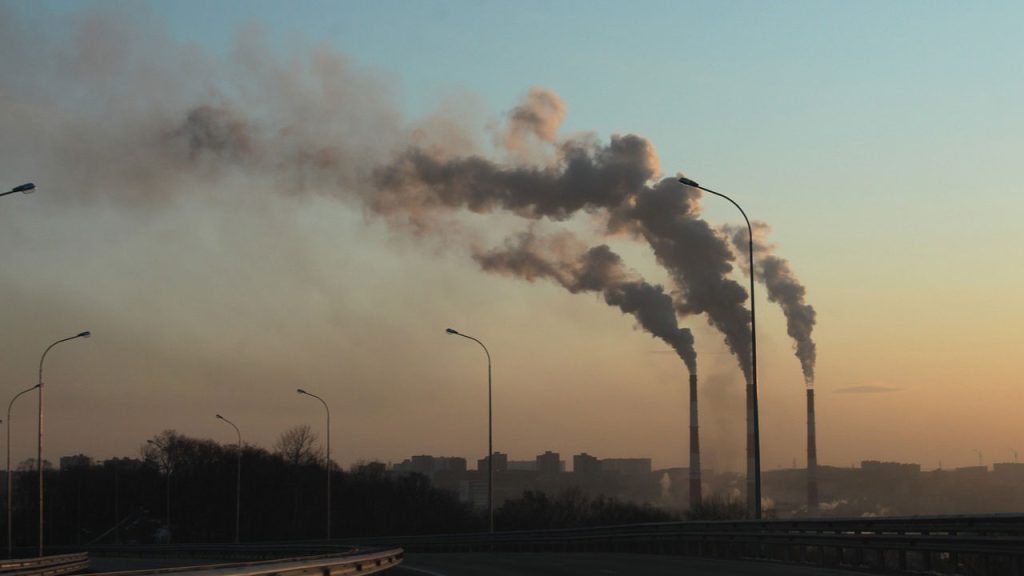
Carbon emissions have risen again in 2023, explains Dr Patrick McGuire
As the COP28 climate summit reaches mid-way, the Global Carbon Budget report announces that global carbon emissions from fossil fuels have reached record levels of 36.8 billion tonnes in 2023, up 1.1% from 2022.
The 2023 Global Carbon Budget report, published today, compares global carbon emissions for 2023 to previous years. The report is used to track trends in global carbon emissions and sinks. An emission source adds carbon to the atmosphere, and a carbon sink removes carbon from the atmosphere.
The Global Carbon Budget is an important measure of progress towards the goals of the Paris Agreement. Every year an updated Global Carbon Budget is launched and presented at the Conference of Parties, known as COP, which is a climate change negotiating conference. This year’s COP28 is currently ongoing in Dubai.
Dr Patrick McGuire, a computational scientist at the National Centre for Atmospheric Science and University of Reading, studies land surface processes and climate science.
The Earth’s land surface – which comprises rocks, soil, vegetation, water, snow, ice and urban materials – interacts with the atmosphere in a number of complex ways. These interactions play an important role in regulating our global climate and the terrestrial land sink of carbon.
Patrick improved and ran climate computer model simulations to understand the impact of changing land-use, as well as tree and crop harvests, on carbon emissions.

“The amount of carbon dioxide released from burning fossil fuels is going down in some areas like Europe and the United States, but it is still increasing overall around the world. All countries need to take much stronger action to transition from fossil fuels to clean energy. If we don’t speed this up, climate change will bring very harmful impacts all over the world,” explains Patrick.
He adds: “Deforestation releases more carbon dioxide than is being absorbed by the current level of replanting. More effort is needed to protect existing forests and plant new ones to help absorb some of the extra carbon dioxide in the air.”
The Global Carbon Budget 2023 report projects that total global carbon dioxide emissions from fossil fuels and land use change will be 40.9 billion tonnes in 2023. This is about the same as 2022 levels, and part of a 10-year “plateau” – far from the steep reduction in emissions that is urgently needed to meet global climate targets.
The study estimates the remaining carbon budget before the Paris Agreement 1.5°C target is breached consistently over multiple years, not just for a single year. At the current emissions level, the Global Carbon Budget team estimates a 50% chance global warming will exceed 1.5°C consistently in about seven years.
This estimate is subject to uncertainties, mainly due to the unknown additional warming coming from non-carbon emissions. However, it is clear that the remaining carbon budget – and the time left to meet the 1.5°C target and avoid the worst impacts of climate change – is running out fast.
Key findings from the Global Carbon Budget 2023 report:
– Global carbon emissions from fossil fuels have reached record levels of 36.8 billion tonnes so far in 2023, up 1.1% from 2022. It is estimated that by the end of the year, levels will reach 40.9 billion tonnes.
– At the current carbon emissions level, estimates show that there is a 50% chance that global warming will exceed 1.5°C consistently in about seven years.
– Global carbon emissions from coal (1.1%), oil (1.5%) and gas (0.5%) are all projected to increase.
– Regional carbon emission trends vary dramatically. Emissions in 2023 are projected to increase in India (8.2%) and China (4.0%), and decline in the EU (-7.4%), the USA (-3.0%) and the rest of the world (-0.4%).
– Atmospheric carbon dioxide levels are projected to rise to an average of 419.3 parts per million in 2023, 51% above pre-industrial levels.
– About half of all the carbon dioxide emitted continues to be absorbed by land and ocean “sinks”, with the rest remaining in the atmosphere where it causes climate change.
– Global carbon dioxide emissions from fires in 2023 have been larger than the average due to an extreme wildfire season in Canada, where emissions were 6-8 times higher than average.
– Current levels of technology-based carbon dioxide removal (excluding nature-based means such as reforestation) amount to about 0.01 million tonnes of carbon dioxide, more than a million times smaller than current fossil carbon dioxide emissions.
The Global Carbon Budget report is produced by an international team of more than 120 scientists, including Dr Patrick McGuire from the National Centre for Atmospheric Science. The report provides an annual, peer-reviewed update, building on established methodologies in a fully transparent manner.
The 2023 edition (the 18th annual report) has been published in the Earth System Science Data journal.
